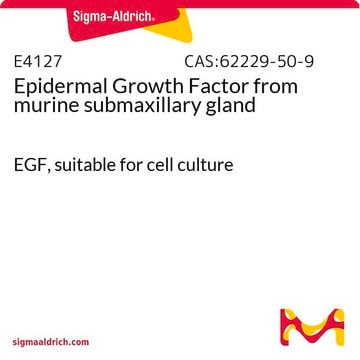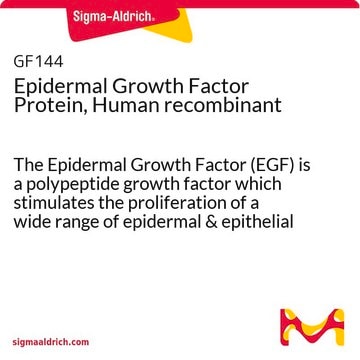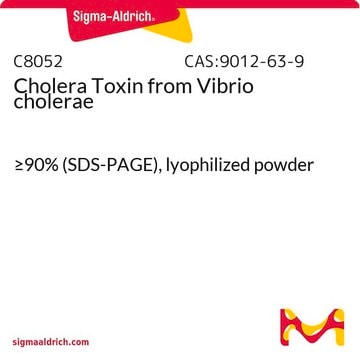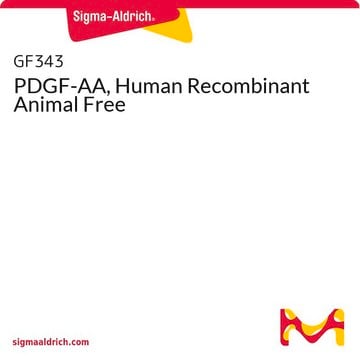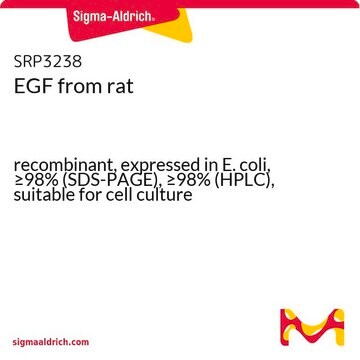After reconstituting the protein in water, it remains active and stable at 2-8°C for up to a week. However, for long-term stabilization at -20 to -80°C, further dilution with a buffer containing a carrier is necessary to prevent activity loss. It is recommended to use 5% trehalose or 0.1% BSA in water or PBS for extended storage. Working aliquots should have a minimum volume of 10 uL and a concentration above 1 ug/ml for optimal stability.
SRP3027
EGF human
Animal-component free, recombinant, expressed in E. coli, ≥98% (SDS-PAGE), ≥98% (HPLC), suitable for cell culture
Sinônimo(s):
Epidermal Growth Factor, URG, Urogastrone
Selecione um tamanho
Selecione um tamanho
About This Item
Produtos recomendados
fonte biológica
human
recombinante
expressed in E. coli
Ensaio
≥98% (HPLC)
≥98% (SDS-PAGE)
Formulário
lyophilized
potência
≤0.2 ng/mL
peso molecular
6.2 kDa
embalagem
pkg of 500 μg
técnica(s)
cell culture | mammalian: suitable
Impurezas
<0.1 EU/μg endotoxin, tested
cor
white to off-white
nº de adesão UniProt
Condições de expedição
wet ice
temperatura de armazenamento
−20°C
Informações sobre genes
human ... EGF(1950)
Descrição geral
Aplicação
Ações bioquímicas/fisiológicas
Sequência
forma física
Reconstituição
Código de classe de armazenamento
11 - Combustible Solids
Classe de risco de água (WGK)
WGK 3
Ponto de fulgor (°F)
Not applicable
Ponto de fulgor (°C)
Not applicable
Escolha uma das versões mais recentes:
Já possui este produto?
Encontre a documentação dos produtos que você adquiriu recentemente na biblioteca de documentos.
Os clientes também visualizaram
Artigos
Discover answers to your frequently asked questions about animal component-free, xenobiotic-free, and chemically defined media and reagents for cell culture.
-
Is it necessary to dilute item no: SRP3027-500UG in a buffer with a stabilizer for extended storage as mentioned in the reconstitution portion of the specification. If so, would D-(+)-Trehalose dihydrate (cat#T0167) be appropriate? Also, specify the buffer considering that water is indicated as an appropriate diluent in the specifications.
1 answer-
Helpful?
-
Active Filters
Nossa equipe de cientistas tem experiência em todas as áreas de pesquisa, incluindo Life Sciences, ciência de materiais, síntese química, cromatografia, química analítica e muitas outras.
Entre em contato com a assistência técnica
